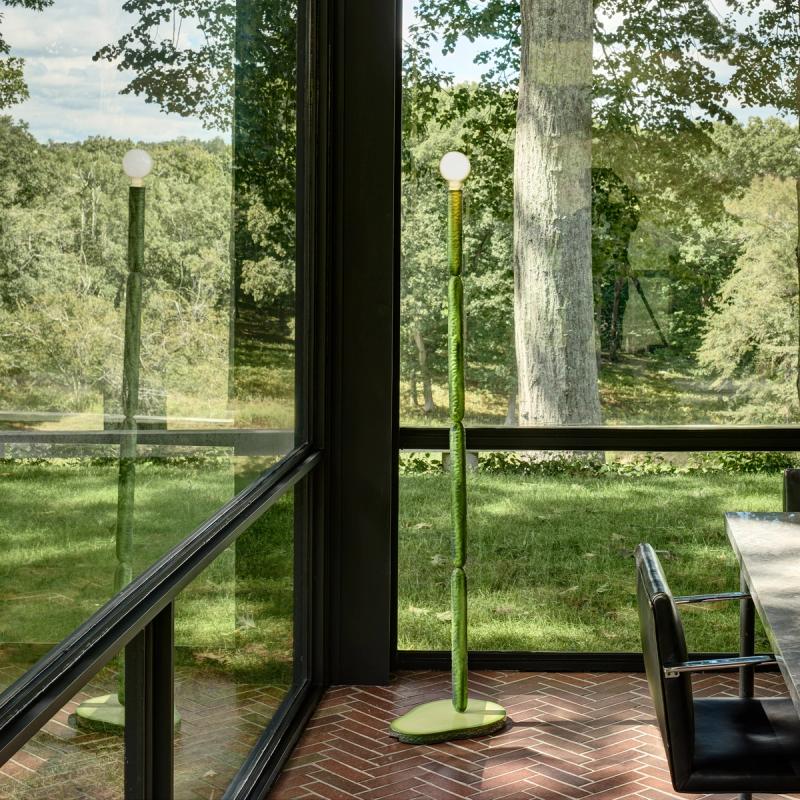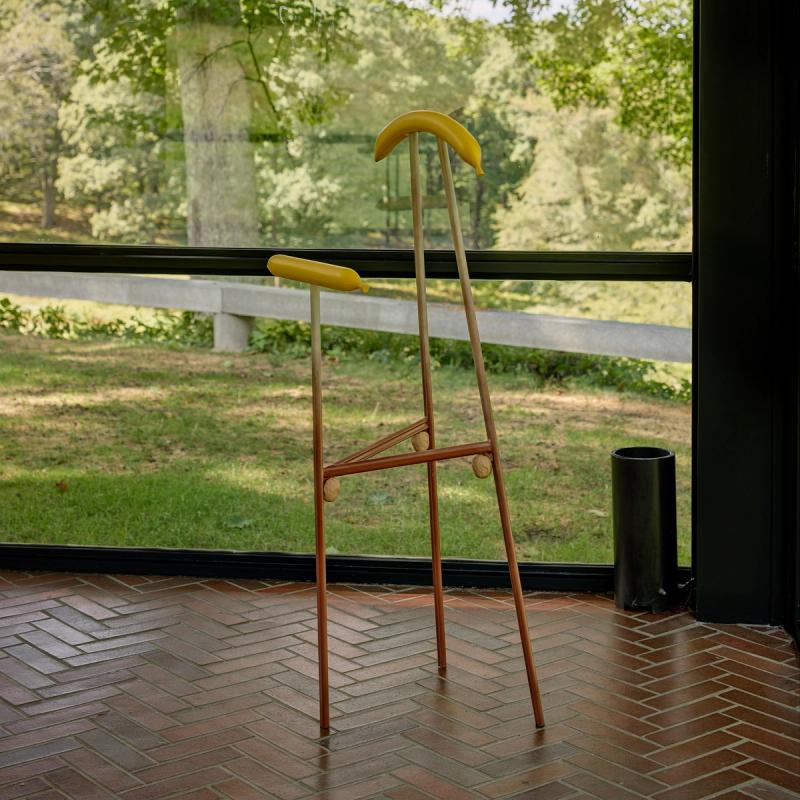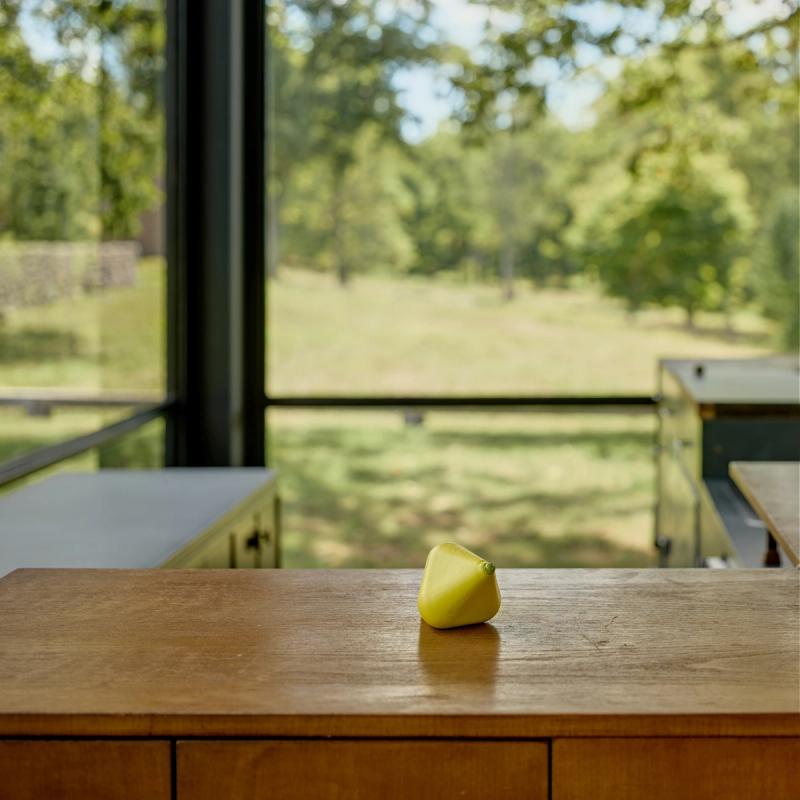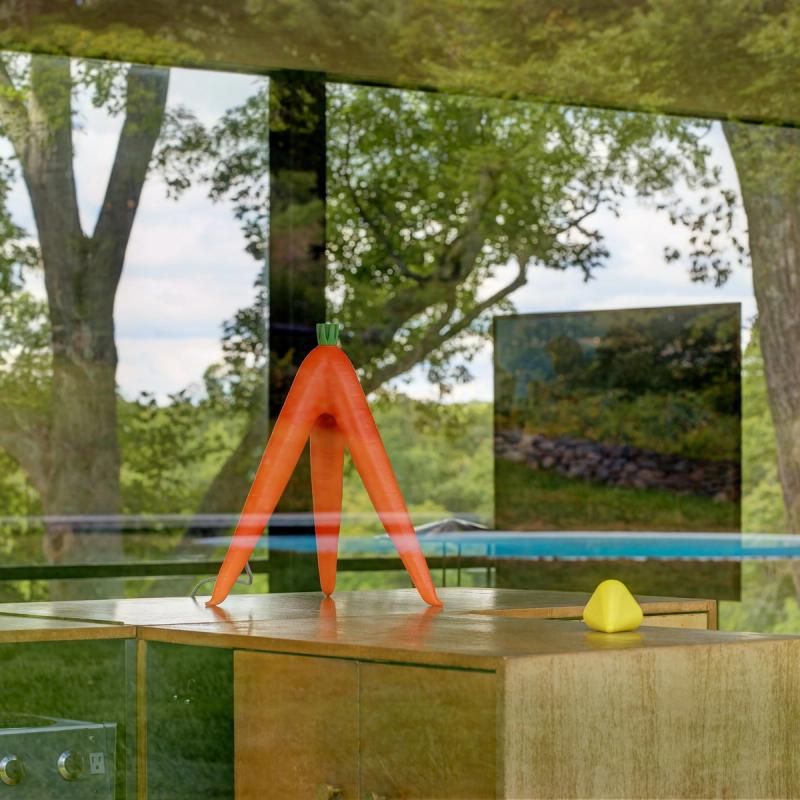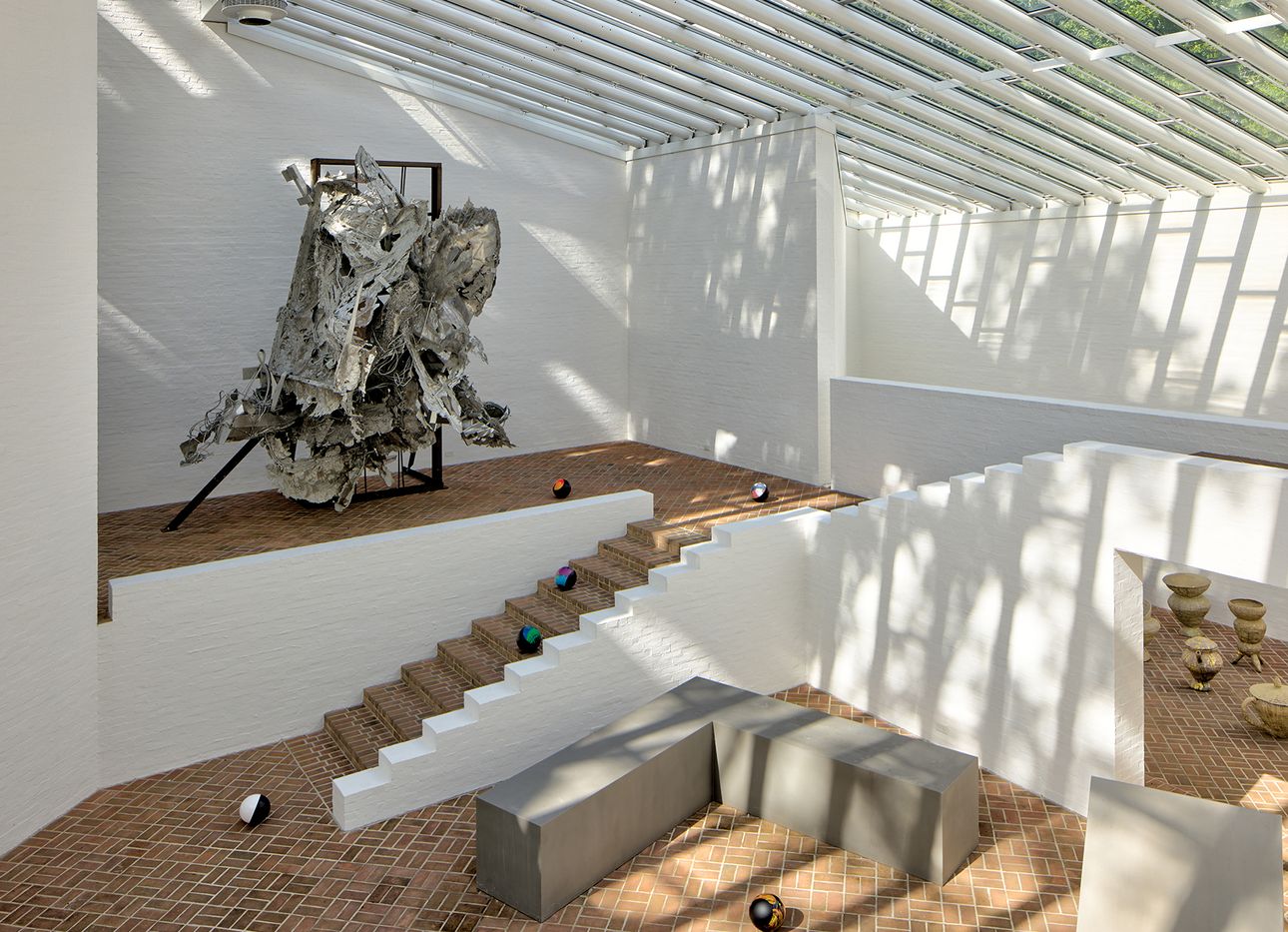
Robert Stadler Has a “Playdate” With Philip Johnson at His Glass House
It’s a serene, bluebird-sky day, a slight chill in the air, and I’m walking with the Paris-based, Austrian-born designer-artist-provocateur Robert Stadler along a central pathway on Philip Johnson’s 49-acre Glass House estate in New Canaan, Connecticut. We’ve just exited the property’s whitewashed, brick-floored, glass-ceilinged Sculpture Gallery, a transfixing space of light and shadow built in 1970 that’s home to works by artists including Michael Heizer, Robert Rauschenberg, and Frank Stella. Now, for one of the first times ever, a temporary installation by a contemporary artist—Stadler—is being shown among the sculptures of these art-world giants.
Composed of 11 bowling balls and presented as part of the cheeky “Robert Stadler: Playdate” exhibition across the site (on view through December 12), the inventive arrangement explores, in Stadler’s wily way, Johnson’s concept of “safe danger.” The spheres both enliven the gallery (think: the shiny black-stone globe in Walter De Maria’s 2004 “Time/Timeless/No Time” installation at the Tadao Ando–designed Chichu Art Museum in Japan, but multiplied and in miniature) while also highlighting the certain precariousness underpinning the room’s design—namely, its railing-free staircase, which descends four landings. Bowling serves as a helpful metaphor for what Stadler has done here: The balls, which allude to Richard Artschwager’s “Yes/No” series (1968–1974)—one of which Stadler, an avid collector, has in his personal collection—disrupt the gallery’s arrangement, striking a playful, Duchampian tone and offering an alternate way of viewing a space that, since Johnson’s passing in 2005, has more often than not felt like an ethereal mausoleum than an active environment for art.
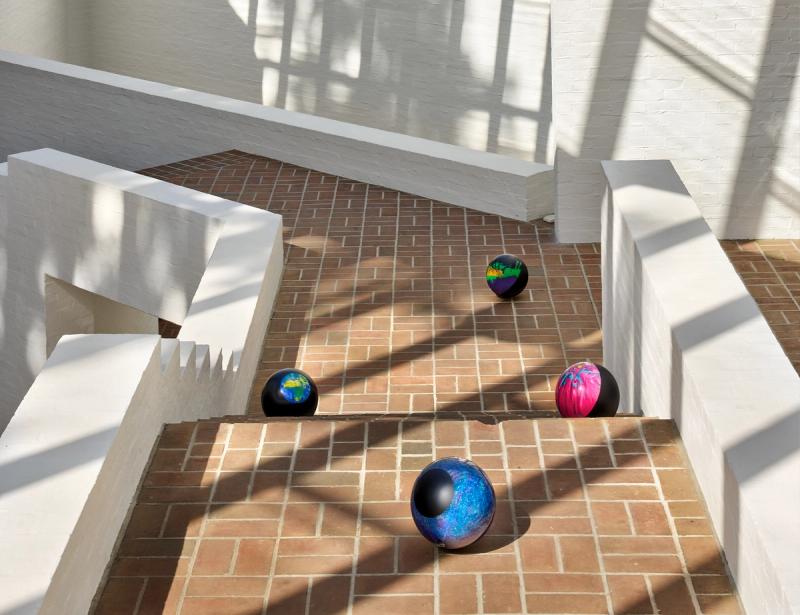
Hilary Lewis, the chief curator and creative director of The Glass House; Stadler’s wife, Serena Ciranna; and Gina, the couple’s 2-year-old daughter, walk ahead of us. “What a day, huh?” Stadler says, beaming.
Considering that he finished installing the works just minutes before my arrival, he seems completely relaxed and at home. While Stadler and I are friends, this visit to The Glass House feels unusually familial, almost as if he isn’t giving me a tour of an exhibition, but rather of his own countryside compound. This, despite the fact that, until meeting Lewis at a design conference in São Paulo in 2018, the work of Johnson and the Glass House site were not really on Stadler’s radar. “I have to admit that, at first, I thought the Glass House was just the Glass House,” he tells me. “I was not aware of the whole site and all these buildings, from the ’50s to the ’90s, in such different styles. One could think that they are not done by the same architect.”
The Glass House site is, in many respects, the ideal venue for Stadler’s work, which—as with Johnson’s—is intellectually rigorous, tends to follow no formal style, eschews categorization, and at its best functions as a form of provocation. The Glass House structures, by design, and the grounds, by their nature, leave plenty of room for interpretation and play. When I ask Stadler how he decided to position his work within the context of Johnson’s, he says, “It was not any one specific idea; it was more the question of ‘why not?’” He adds, “I think that’s where I’m most connected with Johnson: a certain idea of freedom of approaching a project. And also trying to figure out how far you can go with it.”
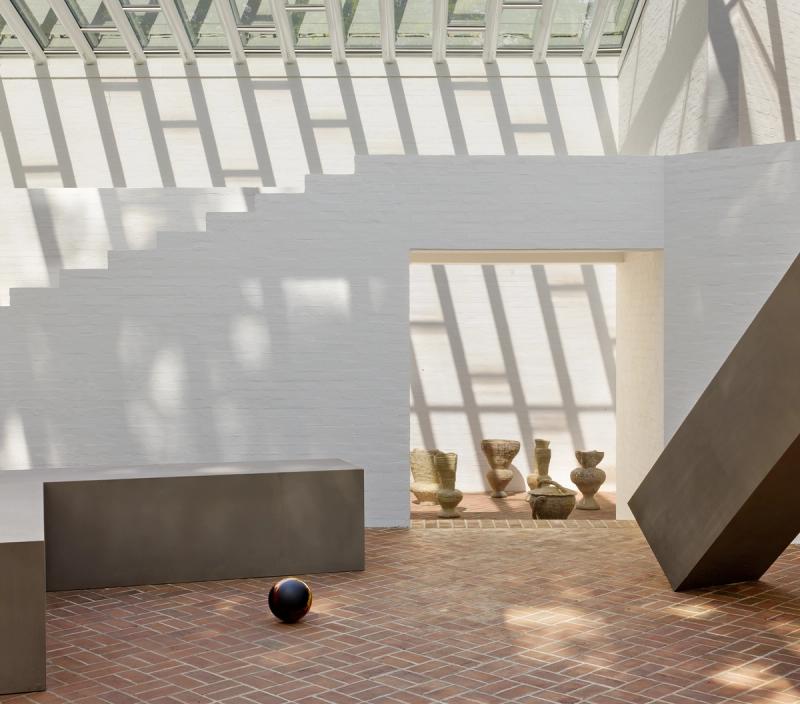
Stadler’s “Playdate” presentation isn’t the first time he has been in direct conversation with a dead artist: The show follows “Solid Doubts,” a 2017 exhibition curated by Dakin Hart at the Noguchi Museum in New York, that similarly pushed beyond any categories of art and design, and created a lively dialogue with the indefinable, multifarious work of the Japanese-American artist Isamu Noguchi (1904–1988). “Playdate” also coincides with “Start!” (through December 15), an exhibition organized by the curator and historian Glenn Adamson at Carpenters Workshop Gallery in Midtown Manhattan that pairs pieces by Stadler with works by Artschwager (1923–2013). (A twelfth bowling ball from the series in the Glass House Sculpture Gallery is on display in the Carpenters show, opposite one of Artschwager’s “Yes/No” pieces.) For Stadler, the Noguchi, Artschwager, and Johnson exhibitions are all part of what he views as a long continuum of questioning, prodding, and tearing down any preconceived borders between art and design. As a historical precedent of this, Stadler cites Noguchi’s United States Pavilion installation at the 1986 Venice Biennale, in which Noguchi installed Akari light sculptures throughout the interior galleries and placed his massive, usable “Slide Mantra” sculpture at the entrance. Certain traditionalists were scathing, with one Financial Times critic calling the lamps and slide in particular “merely silly.” “Isn't it really strange,” Stadler says, “that we still have to talk about this today? It still seems to be a slippery ground.”
When Stadler and I enter the Glass House, he turns to me with a grin and says, “The idea here was to turn the Glass House into a greenhouse, where these engineered fruits and vegetables might have grown.” By “these engineered fruits” he’s referring to his new “OMG-GMO” series of ceramic sculptures, made in collaboration with the Italian ceramics company Bitossi, that serve as a critical (and hilarity-ensuing) commentary on how humans have manipulated nature through genetically modified organisms. Cucumbers stack atop an avocado base to become the “Size Matters” lamp; bananas and rhubarb create the “Mute Mix” clothing rack; oversized carrots merge into the “Tip Toe” tripod table lamp. The decorative becomes structural and vice versa.
This is the power of the “OMG-GMO” pieces, particularly in this setting: It’s a serious place, but let’s be real, it’s not that serious. Of Johnson, Lewis adds, with a laugh, “He liked his fruits and vegetables.”
A bit later, Stadler and I are sitting on his gray marble “Ditto” chairs on the main lawn, just up the hill opposite the Glass House and next to the pool. Stadler tells me that the “OMG-GMO” project, which came to fruition during Covid-19 lockdowns, is “very different from most of the things I've done. I really enjoyed my own uncertainty as to why I was doing it. Like, is this too much? What am I even doing here?”
Stadler brings up Artschwager in this context. “In a way, he questions the identity of everyday objects by turning them into something like three-dimensional images, and for sure into sculptures, and for sure into something with no claim for function anymore. I enjoy the question of the identity of objects as well. But I don't want to lose the function. So what I'm trying to do with some of my work is to see if it's possible to do both in the same object—this questioning aspect, but then for the object to still have a function as an object of design.”
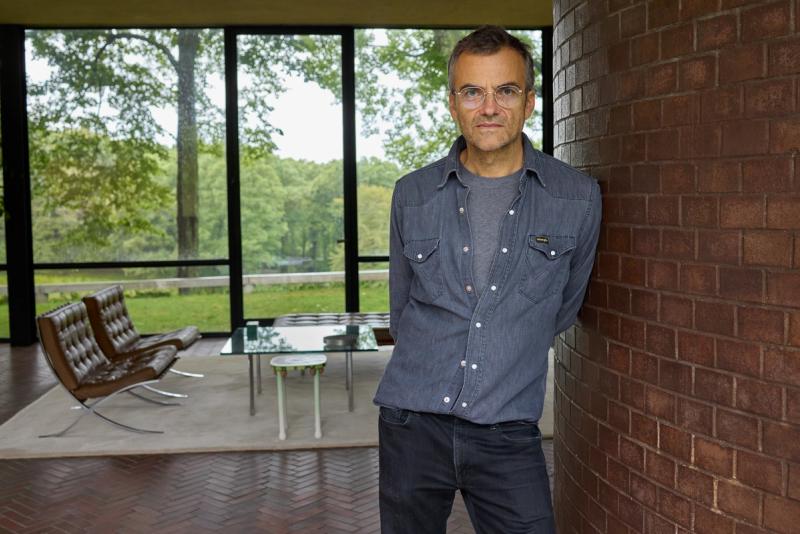
We get up and begin making our way toward Da Monsta, a funky, red and black structure, completed in 1995, that’s as much a building as it is a sculpture. From certain vantages, Da Monsta appears to protrude from the landscape, like a fin out of water. Inside, Stadler’s “Soft Screen” light sculpture made of onyx and Pietra di Vicenza marble is positioned next to one of his “New Paintings” marble-topped dining tables; in an adjacent room, a screen displays animated NFTs of the “OMG-GMO” pieces, which effectively become cartoon characters.
I ask Lewis what, exactly, about Stadler’s work lends itself well to the Glass House in particular. “First of all,” she says, “it’s a beautiful combination of elegance and wit, which seems to me to symbolize exactly the kind of spirit that Johnson and David Whitney exhibited here. Also, just the sense of very much being in the now. That was something that was always the ethos of the place. It wasn't about looking backwards… Our spirit has always been, ‘What’s next?’ When Johnson passed away, we were working on a book called Fast Forward. That gives you some sense that, at 98 years old, his mindset was very much in that sensibility.”
She continues, “The idea of something utilitarian turned into something extraordinary was very much Johnson. Everything that was placed in that house had to be placed as a work of art.” Of Stadler’s “Juicy Joseph” watermelon seat-stool, which slyly references the work of the Austrian-Moravian architect and designer Josef Hoffmann (1870–1956), she says, “I think Philip would have laughed his head off at that. I think David would have laughed even more.”
Lewis points out to me that Stadler’s presentation follows, in addition to exhibitions by artists such as David Hartt, Robert Indiana, and Jennie C. Jones, one by the Japanese artist Yayoi Kusama, who in 2016 covered the Glass House’s walls in a screen of red dots, turning the structure into an “infinity room”; placed a reflective steel pumpkin sculpture on the hillside where Stadler’s “Ditto” installation now sits; and created “Narcissus Garden,” comprising 1,300 floating steel spheres, in the pond. As with Kusama’s interventions, Stadler’s pieces, while largely functional (the bowling balls are an arguable exception), defy categorization. Both Kusama’s and Stadler’s works exude a sense of childlike wonder.
Considering “Playdate” as a whole gets me thinking about Stader’s 2014 exhibition “Quiz,” which he co-curated as a resistance to definable typologies via “unidentifiable objects” that intrigue, confuse, or mix up any preconceived notions of what exactly they might be. From Paul Cocksedge’s “Marble Bookmark” (2010) to Naoto Fukasawa’s donut-shaped humidifier, from Zaha Hadid’s Nova shoe (2013) to Enzo Mari’s Bambù vase (1969), the presentation embraced the unrecognizable. In creating the Glass House, Johnson sought to form a refuge within this sort of blurred-lines gray zone, a netherland region merging art and design, craft and industry, man and machine, architecture and nature. As “Playdate” illustrates and affirms, this, too, is Stadler’s sweet spot.
